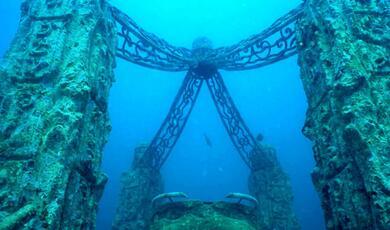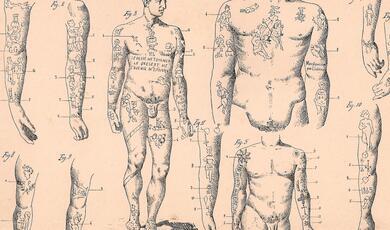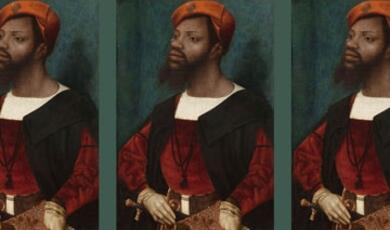Life in a Revolutionary Decade in Britain (1649-1660)
Share
- Details
- Text
- Audio
- Downloads
- Extra Reading
What was life like in 1649-1660, Britain's only decade as a republic?
This lecture explores the immense changes of the period through the personal experiences of prominent figures. It argues that, despite the failure of the republican project and the Restoration of the Monarchy in 1660, the decade forged the British Isles and created the conditions for the commercial and colonial prosperity of the centuries that followed.
Download Text
Life in a Revolutionary Decade in Britain
Dr Anna Keay
3rd March 2022
In December 1651 the young Dutchman Ludovik Huygens arrived in London as part of a diplomatic mission to the capital of the new Commonwealth of England. His party was taken on a tour of Whitehall Palace, once the principal residence of the Stuart monarchs, now the headquarters of the republic. Here he heard a sermon preached in the chapel and admired among the large crowd there an attractive and ‘rather bejewelled young lady’, she was listening attentively and taking notes. In the great audience chamber, the Banqueting House, they were shown the window through which Charles I had gone to the scaffold and were encouraged to ‘lean out’. Overhead Rubens’ paintings of the apotheosis of James I still soared, but many of the palace’s walls bore smoky shadows where Charles I’s great painting collection had hung, recently taken down and sold to pay the state’s bills. Since the regicide two years earlier there had been no single sovereign to whom diplomats could present their credentials. Instead, the Dutch party was ushered into what had been the Queen’s Presence Chamber now a grand committee room; here 24 members of the executive Council of State were meeting around a long table. In the chair that day was the lawyer Bulstrode Whitelocke. Missing due to illness was the head of the army, General Cromwell. The councillors rose respectfully, and the ceremony of arrival was performed. The diplomats’ papers were accepted on the republic’s behalf by Whitelocke for the council and by the Speaker of the House of Commons on behalf of the people. Being from a republic themselves, the Dutchmen were untroubled by all this novelty. Already the clocks had been reset and the audience took place in what was solemnly called ‘the third year of freedom, by God’s Blessing restored’. As far as they or anyone else knew monarchy was gone for good.
Period of crisis are quickeners of change. As we have all learnt these past two years, however unwelcome, prohibitions and restrictions can act as catalysts, hastening things on, in adoption of technology, in working practices, in personal habits and priorities. So it was that the decade of republicanism in the British Isles, though destructive in many ways, acted as an extraordinary stimulus. It was a constitutional failure; the monarchy was restored in 1660 and has never returned in Britain (though of course it would in Ireland). But other aspects of life in a time of crisis and conflict were not only to endure but would become fundamental to the development of Britain and British history ever after.
The English republic came into being in the early weeks of 1649. For much of the previous decade the British Isles had been embroiled in a destructive civil war, sparked by a conflict over religion and political authority. It had never been a war between royalists and republicans. Very few people contemplated anything so radical as a republic during the years of war. Instead, the argument was about what form of Protestantism the nations of the British Isles should espouse and what the extent of royal power should be. During those years the army had become increasingly radical and soon had aspirations for change which outstripped those of many of their officers and the wider political nation. After the Parliamentarians won the war, and it looked likely a deal would be done with the King that would see him reinstated as sovereign, albeit on restricted terms, the leaders of the army intervened. The House of Commons was suddenly and unexpected ‘purged’ by army officers on 6 December 1648, with 186 moderate MPs prevented from entering. A further 86 Members left in protest leaving behind what would be called the ‘Rump’, the residue of around 200 MPs who were considered radical enough to remain. This group voted to put the king on trial and on 30 January 1649 he was beheaded before a transfixed crowd on the street now called Whitehall near where the cenotaph now stands.
The office of king was abolished, as was the House of Lords, and the church of England was already being radically reformed, with the abolition of bishops and of the Book of Common Prayer. For the following eleven years England would remain a republic on a series of changing constitutional terms, with Ireland and Scotland soon bound to it by conquest. For four years, known as the Commonwealth, the House of Commons was the single sovereign body and government in the hands of a council of state. For a further five years a modified version of this prevailed, a Protectorate, in which sovereignty was shared between parliament and a powerful steward in the form of the Lord Protector, a position held first by the soldier and MP, Oliver Cromwell, and then briefly by his son Richard. For the final year an attempt to reinstate the Commonwealth gave way to bitter fighting between parliament and the army from the chaos of which the restoration of the monarchy emerged as the only viable solution.
Much debate and discussion has been had over the centuries about who were the heroes and who the villains of this extraordinary time. The authors of the great historical satire 1066 and all that as ever perfectly encapsulated contradictions of what they called the ‘Struggle between the Cavaliers (Wrong but Wromantic) and the Roundheads (Right but Repulsive)’. Was Charles I wronged? Were the moving figures of the republic rightminded progressives or murderous despots? The decade has also been dominated by discussion of the figure of Oliver Cromwell. The purpose of this talk is not to deal with either of those issues. The matter of who was right and who wrong is perhaps the least interesting question to ask, mired at is inevitably is in modern attitudes to what is ‘right’ or ‘wrong’ and the difficulties of navigating those when looking at the behaviour of people in the past when attitudes were very different. Instead, it seems much more fruitful to think about why people acted as they did, and how the changes of the period actually affected people’s lives. Secondly, I am not going to talk at all about Oliver Cromwell (although he is discussed at length in my new book). While he was the single most important figure of the republican decade, he did not bring it about, he was not the republic’s founding father, he was not head of the army that won the civil war, he was not even in England for much of the formative first two years of the republic. The purpose of this talk, instead, is to explore what the reality of that exceptional time was through a series of other men and women who breathed its unfamiliar air.
First, we turn to the man who sat at the fore of the event which heralded in the republic: the trial of Charles I. John Bradshaw was 46 when he acted as President of the High Court convened to try the king. He was a lawyer by profession, active in London, but did not come from revolutionary stock. He had been born and brought up in comfort and wealth at Marple Hall in Cheshire. His was a respectable family, who gave to the church plate, dressed in fashionable textiles, drank and gambled. Bradshaw was tutored in the strongly Providential views of the day. All unexplained or exceptional occurrences were to be understood as God’s actions, interventions in which His judgement was expressed. So, when the performing bear at the May Day festivities mauled its owner, the meaning was clear – God was expressing his disapproval of such events. Bradshaw trained as a lawyer in London, and then returned to his native Cheshire. A second son, he established his own base in the town of Congleton where he rose to become Mayor. It was in this position that catastrophe hit. A ferocious wave of bubonic plague overtook the town in 1641. Bradshaw struggled to contain it. The plague preparations he had put in place were overwhelmed. Timber quarantine cabins were erected to house those isolating, dogs and cats were exterminated as being thought to spread infection, gravediggers were paid danger money to bury infected corpses and shops closed bringing the economic life of the town to a complete standstill. It took two years for Congleton to be free of plague, and when it finally was, Bradshaw packed his bags and made for London.
In the years that followed Bradshaw became closely associated with the parliamentarian cause. His religious views aligned with those of many of his fellow critics of Charles I, who he came to regard as ‘more cruel than Nero’. He rose to be a judge. Nonetheless when he was asked to chair the court created to try Charles I in January 1649 he hesitated. He tried to decline, as many others did, but in the end agreed, believing that God required it, because it was as much a sin to spare the guilty as it was to condemn the innocent. Charles I never entered a plea, refusing to acknowledge the legitimacy of the court, and was condemned as a consequence. Bradshaw held his nerve throughout, remaining calm and dignified in the conduct of his office. When the new council of state was appointed, Bradshaw was asked to take its chair. For better or worse, he had bought into the concept of the new republic, in which the people in parliament were now the source of all sovereignty, and he would devote the rest of his life to trying to uphold it.
Watching the astonishing political events of the year 1649 with as sharp an eye as any was Marchamont Nedham. A small, pot-bellied man in his twenties, with a sharp wit and a talent for friendship, Nedham was the vigilante publisher of the royalist newspaper Mercurius Pragmaticus. The name of his paper was a head-on acknowledgement of his political position. He had started his career in journalism working for a parliamentarian title but having got into political hot water had changed sides. Journalism was an entirely new profession. A generation before, newspapers had not even existed in Britain. Since they first appeared around 1620 their popularity and number had expanded dramatically, hasted by the political controversies of the civil war. Now they were in the hands of innkeepers and weavers, apothecaries and apprentices across the country. So strong was the hand of the army on London during Charles I’s trial that Nedham did not manage to get a paper to press at all in those eventful weeks. Parliamentary agents were on his tail, working now for the Council of State chaired by John Bradshaw. Nedham used the suspense as a journalistic device, opening his issue on 1 May with the words: ‘Now the Beagles must go a hunting again, and I must be the Hare; for so it pleaseth Master Bradshaw’. While much 17th century prose was written in long, complex sentences this was not Marchamont Nedham’s way. He knew how to excite and engage his readership and it was precisely his fearless, satirical writing that got him into trouble. He taunted the Lord President of the Council himself as ‘Bradshaw, that dirty upstart, that half Man and Beast … that prodigious Monster, that walking hell’, one who had to be ‘guarded by Soldiers to prevent [the people] tearing in pieces’. He repeatedly denounced the Rump Parliament, reminding his readers of its unorthodox beginnings and the soaring irony of its claim to represent the people. As a number of MPs who had been excluded in the army Purge resumed their seats Nedham marvelled that they didn’t ‘stumble at the door, though his Majesties blood lye at the threshold’. For all their talk of liberty, and taste for grandiose symbols of their new authority, these men of the House of Commons were ‘supreme puppets’, while ‘poor Liberty lies fetter’d now like a flie in the Cob-web’. Reporting on a civic procession in which the Lord Mayor of London surrendered his sword to the Speaker of the Commons in recognition of Parliament’s sovereignty, Nedham told his readers that ‘Oliver [Cromwell] laught in his sleeve’ knowing that it was with his own steel blade and the might of the army, that true authority now lay.
Nedham was captured in June 1649 and clapped in Newgate prison. After failing to negotiate his release, and with his trial drawing closer, he took matters into his own hands, and escaped. As he did so the new republic struggled with its own problems. A rising by radical Levellers was put down, and an army sent to prevent Ireland from falling into the hands of the young titular King, Charles II. The massacre of large numbers of civilians on the Irish campaign was incendiary news, and a crackdown on all newspaper publishing was set in train just as reports reached England in September 1649. The republic had a massive public-relations challenge on its hands and Marchamont Nedham, in hiding, saw his opportunity. He wrote to John Bradshaw and proposed that he, Nedham, be released from all charges, and be taken on to produce a new paper that would transform the republic’s reputation.
The leaders of the Commonwealth must have hesitated to deal with someone who had so relentlessly scorned and excoriated them. But with Charles I’s purported Memoirs, Eikon Basike a runaway bestseller, and a cult of the martyr king fast forming, they knew they had a fight on their hands. Swallowing their misgivings, Marchamont Nedham was hired.
The first issue of Mercurius Politicus, the News of the State, was published in early June 1650. It opened with the memorable challenge: ‘Why should not the Commonwealth have a fool as well as the King had?’. For the following nine years this sparky, snappy paper would appear weekly on a Thursday and become the indispensable house journal of the English republic. Nedham was paid for his efforts, but soon hardly needed to be, as the success of his paper, and the income from the classified ads he was soon running, made it a money spinner. While he had a lively irreverent style, Nedham also prided himself on the reliability of his content, and his network of news gatherers and foreign correspondents soon made Mercurius Politicus widely read right across Europe and on the other side of the Atlantic.
Nedham knew where his financial loyalties lay and was careful to steer clear of the most controversial aspects of the new regime. The army returned mud and blood splattered from conquering Ireland and Scotland to find the Rump Parliament hadn’t affected the wholesale religious and social reforms they sought. Nedham made no mention of the anger this generated. And when on 23 April 1653 Oliver Cromwell evicted the Rump MPs by force from the chamber, famously telling them they had sat too long for all the good they had done (or words to that effect), Nedham apologised to his readers that sadly lack of space prevented him from going into the details.
Mercurius Politicus was on sale in London from the mercury sellers’ baskets on a Thursday, reaching market towns in much of England by the weekend. Among the many who received the weekly news packet were the Le Strange family of Hunstanton in North Norfolk. Sir Hamon L’Estrange, the elderly head of the family, had fought briefly for the king at the very beginning of the civil war, before being defeated at the siege of King’s Lynn in 1643. By the mid-1650s he and most of his family had reconciled to the new regime. He and his two older sons had signed the ‘Engagement’ the oath of loyalty to the new republic required of all adult men, and they took no part in Charles II’s attempt to reclaim the throne in 1651. The L’Estranges had been hit hard financially. The terms of the settlement after the siege required them to pay for much of the damage. This included rebuilding the medieval alms-houses at Gaywood, which as a stone plaque records had been ’burn down’ during the siege. Like other royalists they also had lands sequestered and had to pay hefty fines to re-gain possession.
It was in print that Hamon and Alice L’Estrange learned of the new constitution instituted in December 1653. The republic lived on in name, but it was now to be a mixed constitution, a Protectorate in which a new Lord Protector, Oliver Cromwell, would share sovereignty with Parliament. Hamon L’Estrange acquired a copy of the written constitution, known as ‘The Instrument of Government’, and shelved it alongside a wide range of other titles in the Hunstanton Hall Library.
While they remained at Hunstanton Hall the republic had brought changes to the L’Estrange family. After centuries of participation, they had had to bow out of public affairs. They could no longer be elected as MPs – those who had fought for the king could not stand – and their traditional place as Justices of the Peace, members of the local Commissions that managed much of the day-to-day business of county government. But with careful financial management, they had been able to regain their lands and seem to have resolved to accept the new world order as they found it. An Act of Oblivion passed in February 1652 formally declared the crimes and misdemeanours of the civil war forgiven and forgotten. Old enmities were to be set aside in the interests of ‘healing and settling’. The spirit of reconciliation was in the air. Most people, of all classes, had after all not actively fought for either side in the civil war. As one seasoned parliamentarian noted in the 1650s, most people did ‘care not what Government they live under, so [long] as they may plough and go to market’.
The church of England had been radically reformed in the mid-1640s to strip it of the residue of medieval traditions, beloved of Charles I, of which puritans disapproved - on the basis that they were not mentioned in the Bible. The church festivals of Christmas and Easter, Whitsun and Michaelmas, Candlemas and All Saints, were all gone, as were bishops and the structure they had furnished. Marriages were now secular not church affairs. Meanwhile a new degree of acceptance was extended to those who were considered properly Godly, but who wished to organise themselves into independent congregations outside the national church, among them the Baptists and a range of other Protestant groups.
While traditional Anglicans were denied the familiar forms of worship no amount of Westminster prohibition could stop centuries of tradition. Music and merrymaking in church was now banned, but what went on elsewhere was another matter. At Hunstanton Hall, as in many other places, Christmas festivities continued despite the bans, with the accompanying feasting, music and dancing, giving and receiving of presents, eating of plum puddings and playing games. The L’Estrange family always sent New Year’s gifts of venison to favoured neighbours, and by the mid-1650s were including their erstwhile civil war opponents among the recipients, including them Oliver Cromwell’s brother-in-law, the parliamentarian governor of Kings Lynn. Trade now traversed the world as never before, spurred on by the more stable trading conditions since 1649, and furs from Russia, textiles from India and spices from the far east graced the affluent parlours of England.
Had this period of calm lasted, the republic might have endured. But it was not to be. In 1655 the new Protectorate suffered two major blows to its confidence. First a plan for a widespread royalist uprising was unearthed. Second an ambitious enterprise to seize Spanish territories in the Caribbean, part of a plan to export the Godly republic abroad, ended in disaster. The Lord Protector and his councillors were left stunned. After the almost unbroken military victories of the civil war God now dealt them a colossal defeat. The message was clear: they were disappointing him. There followed a wave of new measures to further moral and religious reform. Key to implementing these was the creation of a network of Major Generals, regional military rulers who were to oversee this process. It was to be paid for by a new 10% tax levied on all royalists and Catholics. In a stroke the process of reconciliation was halted. Old enmities were reignited, and unforgettable indignities visited on families like the L’Estranges by the energetic band of young Major Generals backed by heavily armed militias.
The requirement on all adult men to sign the Engagement had seen those who refused lose their positions. Heavily royalist places suffered the most and few were more royalists than Oxford where Charles I had been based for the first years of the civil war. The beneficiaries of the exodus from university positions that followed were the young academics who might otherwise have waited long years to acquire a post. Among them was a tall, short-sighted young man, with a head of thick brown hair. William Petty did not come from a gentry family, as John Bradshaw and Hamon L’Estrange did, he did not have an educated clergyman as a stepfather like Marchamont Nedham. His father was a small-time clothier on the south coast, and it was only misadventure as a young sailor that had caused his course to alter radically. Having been put ashore, injured and penniless, he found his way to the Jesuit university in Caen, his extraordinary memory and conspicuous cleverness recommending him. The 1640s saw Petty in Paris and by 1649 he was studying anatomy in Oxford. Here he met a crowd of ambitious young men who, like him, were exhilarated by the new scientific thinking. The assumptions of classical science, about the elements, the continents and the skies were being shaken, and now this group of young men, promoted fast by political turmoil, and operating in a world where political as well as philosophical holy cows had been slain, were coming to the fore. William Petty was studying anatomy and just a year after completing his doctorate was appointed Oxford professor of anatomy.
Since 1649 Petty and his fellow young scientists had been meeting weekly in his rooms on the High Street calling themselves the ‘Oxford Experimental Philosophy Club’. His downstairs neighbour, the chemist and apothecary John Clarke, provided the ingredients for many of their activities. This was the proper first scientific research society, with regular meetings and rules for election and the management of business. Individually and collectively this group would, through trial and error, observation and measurement, bring about fundamental changes in the human understanding of the world.
Each week at their meeting this group of young men, almost all in their twenties and thirties, undertook practical experiments – the life blood of their association. Their research ranged across a dazzling array of subjects from the valves of the veins to the spots on the sun and its rotational axis, from the existence (or not) of vacuums to the weight of air, from the hypotheses of Copernicus to the works of Galileo ‘and divers other things of like nature’. Among their number was John Wilkins, the recently appointed Warden of Wadham College who, with his talented young protégé, Christopher Wren, was having an eighty 80-foot telescope built for examining the moon. Another, Seth Ward, the first Oxford professor of astronomy to teach Copernicus, was setting up a chemical ‘elaboratory’. To Wilkins it was clear that ‘there are many secret truths, which the ancients have passed over, that are yet left to make some of our age famous for their discovery’.
In 1652 Petty was offered a lucrative position as physician to the Commonwealth Army in Ireland. The republic’s bloody campaign there, which Cromwell himself had led, was now over. Hundreds of thousands had died to bring the island under the control of the Puritan English government. The bodies may have been buried but the financial cost had yet to be paid. In a fateful formulation that dated to Charles I’s time, both the funders and the fighters of the English army were to be rewarded in lands confiscated from the vanquished Irish. Until this could be achieved the army could not be disbanded and the immense costs would continue to mount.
The crucial stumbling block was the lack of information. Accurate maps simply did not exist for most of Ireland. A group of professional surveyors had been tasked with remedying this. As they bustled in and out of meetings at Dublin Castle William Petty looked on in disbelief. The task was clearly going to take most of a decade, the costs would be astronomical and the results unreliable.
Petty could not stop himself from intervening. He put it to his master, the Protector’s able second son, Henry Cromwell, that he should be given the contract instead. He would sack the surveyors and train up the underemployed soldiers in their place. Teaching them to undertake each aspect of the cartographical process – measuring, calculating, drawing, scaling and so on - he would create far more accurate maps, produce them for a much lower cost and undertake the whole exercise in just one year. So it was that the most ambitious mapping project in the history of the British Isles was launched. It would be two centuries before England would be mapped with comparable accuracy.
William Petty would confound his many sceptics to complete the task in 13 months. ‘The Down Survey’ set new standards in mapping and in the management of men and projects and provided the basis for an epic redistribution of land. He was no fan of this process, but he felt that if it were to be done it should be done accurately. Before 1640 about two-thirds of Ireland had been owned by Irish men and women, most Catholics. By 1660, thanks to the programme of confiscations, three-quarters of Ireland was in the hands of Protestants from mainland Britain. There it would remain. The disenfranchisement of the Irish had been affected, and the consequences would reverberate down the centuries.
* * *
The tensions between the army and parliament with which the republic had begun never went away. The kingless state had never enjoyed the support of the political nation, and the real possibility that people might have learned to live with it was wiped out by the invasive policies of the mid-1650s. After Oliver Cromwell died his dominating presence was gone and the all-out conflict between parliament and the army resulted. Out of this maelstrom the Restoration of the monarchy soon seemed to many, including plenty who had fought against Charles I, as the more likely route to stability. Crucial among those who became convinced of this was Anne Monck, wife of the soldier General George Monck, head of the Commonwealth army in Scotland. She had met her husband fifteen years earlier when he was a prisoner in the Tower of London and she the laundrywoman who took care of the prisoners’ clothes. The pair had married, probably bigamously, and she enjoyed her husband’s complete confidence. As the couple looked on at the political chaos in London following Cromwells death she urged her husband to act. He declared his opposition to his fellow army officers in London and determination to uphold parliament. Only a respected soldier could turn the formidable republican army against its senior officers, and, spurred on by Anne this is exactly what he did. Once a full parliament was at last allowed to meet it voted, as it probably would always have done, to restore the monarchy.
While the republic ended in May 1660 the experiences of the past decade could not simply be struck out. The old world had gone and, the restoration of the monarchy notwithstanding, the effects of those years would endure.
The military force necessary to wage war, and to keep control once it had been won, had brought with it a significant expansion in the state. Central government had grown considerably, the Major Generals had been just one ingredient of the far more centralised state that had operated in those years. Maintaining a standing army and a navy strong enough to shore up a revolutionary regime had meant higher taxes and more men and administrative machinery. Much of this would outlive the republic. The need see off challenges to the new regime had forced a deeper integration of the British Isles that had ever been attempted. Scotland and Ireland had both been conquered by the English republican army. Ireland was subjected to a wholesale redistribution of land that would disenfranchise its Catholic population, and Scotland bound together with England in a parliamentary union that would be reborn in the Act of Union of 1707.
People were more literate than ever before; daily consumption of newspapers and printed works had brought the nation into regular contact with national and international affairs. In 1660 the Oxford Scientists would move to London. Judiciously renaming themselves the Royal Society they would be at the forefront of a new era of scientific endeavour that spawned an industrial revolution. New tastes had been established during those tumultuous years that would never fade. The ban on theatre had created an incentive for impresarios to come up with alternatives, the most enduring among them opera, first performed in Covent Garden in 1656. The first coffee house had opened in England in Oxford in 1651 and come the Restoration – as today – were to be found almost on every street corner in the West End of London.
In many ways it was the Restoration of 1660, rather than the Commonwealth years of the 1650s, that would prove the aberration. In that remarkable decade were sown the seeds which would soon flower. By the end of the century much that the republic had pioneered had become part of the mainstream in much of the British Isles: freedom of the press, freedom of worship, naval and military might, scientific endeavour and a belief in the supremacy of parliament. In 1657 the East India Company was granted a new charter and the British state embarked upon its first trans-oceanic colonial mission, establishing a colony in Jamaica. Just as that island had not been the original goal, so the consequences would be unexpected. As British endeavours overseas prospered, and the miserable human cargoes were transported across the Atlantic to work the sun-baked fields of the Caribbean, so began the international expansionism that would dominate the relationship between the British archipelago and the world for centuries to come.
Charles Dickens’s words on the French Revolution, therefore, offer something of a fitting epilogue to the English revolution of a century before. As he famously put it in the opening lines of a Tale of Two Cities, ‘It was the best of times, it was the worst of times, it was the age of wisdom, it was the age of foolishness, it was the epoch of belief, it was the epoch of incredulity, it was the season of light, it was the season of darkness, it was the spring of hope, it was the winter of despair.’
© Professor Keay 2022
References and Further Reading
Toby Barnard, Cromwellian Ireland: English Government and Reform in Ireland 1649-1660 (Oxford, 1975/2000)
Michael Braddick, The Oxford Handbook of the English Revolution (Oxford, 2015)
Barry Coward, The Cromwellian Protectorate (Manchester, 2002)
F. D. Dow, Cromwellian Scotland 1651-1660 (Edinburgh, 1979)
Christopher Durston, Cromwell’s Major-Generals: Godly Government during the English Revolution (Manchester, 2001)
Clive Holmes, Why was Charles I Executed? (London, 2007)
Sean Kelsey, Inventing a Republic: the Political Culture of the English Commonwealth, 1649-1653 (Stanford, 1997)
Jason McElligott and David L Smith Royalists and Royalism during the Interregnum (Manchester, 2010)
Austin Woolych, Britain in Revolution 1625-1660 (Oxford, 2002)
Blair Worden, The Rump Parliament (Cambridge, 1974)
References and Further Reading
Toby Barnard, Cromwellian Ireland: English Government and Reform in Ireland 1649-1660 (Oxford, 1975/2000)
Michael Braddick, The Oxford Handbook of the English Revolution (Oxford, 2015)
Barry Coward, The Cromwellian Protectorate (Manchester, 2002)
F. D. Dow, Cromwellian Scotland 1651-1660 (Edinburgh, 1979)
Christopher Durston, Cromwell’s Major-Generals: Godly Government during the English Revolution (Manchester, 2001)
Clive Holmes, Why was Charles I Executed? (London, 2007)
Sean Kelsey, Inventing a Republic: the Political Culture of the English Commonwealth, 1649-1653 (Stanford, 1997)
Jason McElligott and David L Smith Royalists and Royalism during the Interregnum (Manchester, 2010)
Austin Woolych, Britain in Revolution 1625-1660 (Oxford, 2002)
Blair Worden, The Rump Parliament (Cambridge, 1974)
Part of:
This event was on Thu, 03 Mar 2022
Support Gresham
Gresham College has offered an outstanding education to the public free of charge for over 400 years. Today, Gresham College plays an important role in fostering a love of learning and a greater understanding of ourselves and the world around us. Your donation will help to widen our reach and to broaden our audience, allowing more people to benefit from a high-quality education from some of the brightest minds.


 Login
Login







